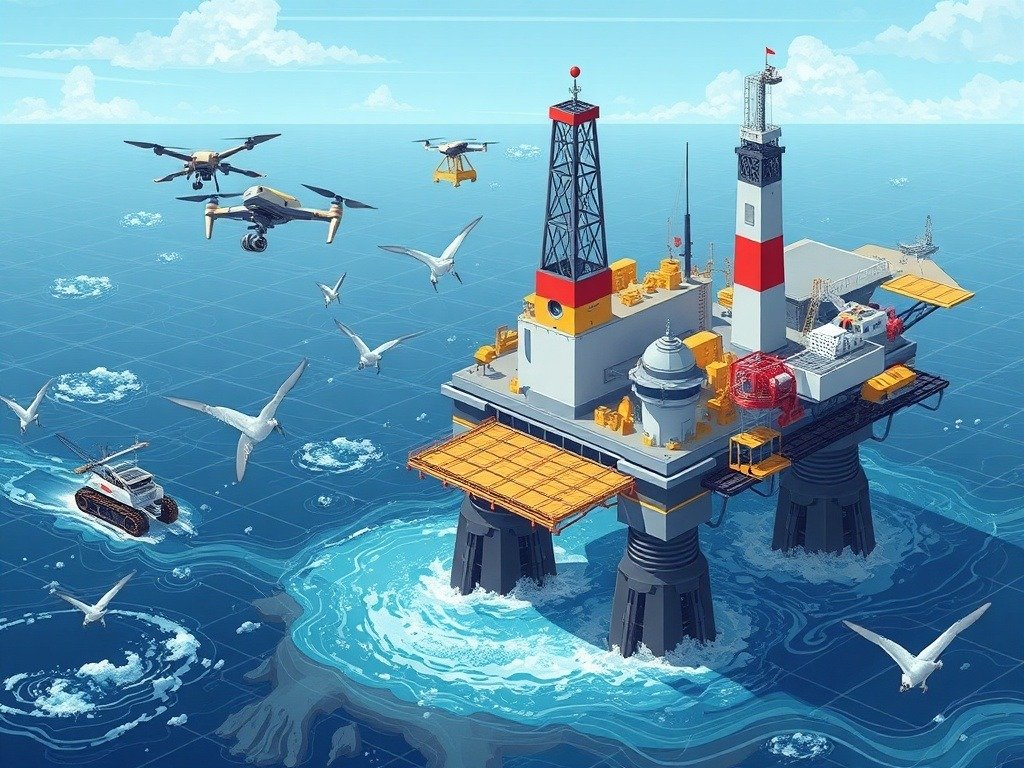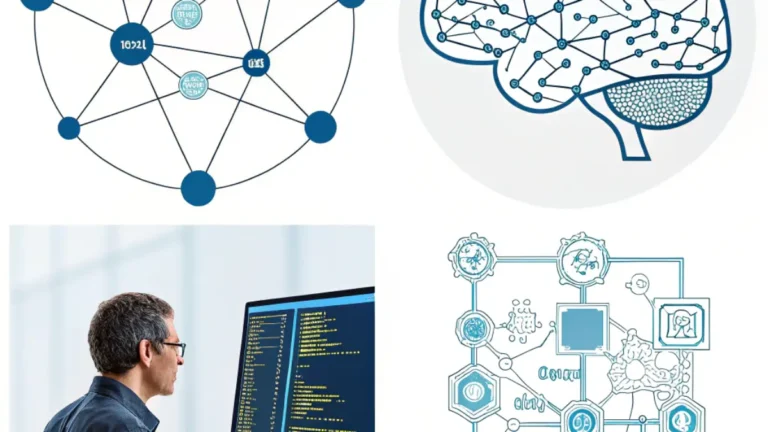
The offshore oil and gas industry has long been at the forefront of technological innovation, with new solutions emerging to improve exploration, extraction, and now, decommissioning. As oil platforms and other offshore structures reach the end of their operational life, decommissioning services are becoming increasingly important. The process of dismantling and removing these structures is both complex and costly, but thanks to advances in technology, the future of offshore decommissioning looks more efficient, sustainable, and cost-effective than ever before.
As demand grows for environmentally responsible and economically viable commercial decommissioning solutions, stakeholders across the industry are looking for ways to improve the efficiency of their operations. In this blog post, we will explore the emerging technologies that are shaping offshore decommissioning services, from robotics and AI to advanced materials and sustainable practices. By understanding these innovations, businesses and contractors can better position themselves to tackle the challenges of decommissioning in the years to come.
The Growing Need for Offshore Decommissioning Services
Before diving into the technologies transforming the industry, it’s important to understand why offshore decommissioning services are so critical. As offshore oil and gas fields mature, many are reaching the end of their productive lifespan. Aging infrastructure, such as oil rigs, pipelines, and platforms, needs to be safely dismantled and disposed of. With stricter environmental regulations and an increasing focus on sustainability, the decommissioning process is becoming a focal point for regulatory authorities and industry players alike.
Decommissioning involves more than simply removing physical structures; it also includes environmental restoration, waste management, and ensuring that no harm is done to marine ecosystems. For this reason, the future of offshore decommissioning is inextricably linked to advancements in technology, which can streamline operations and reduce the environmental footprint of these processes. These innovations are paving the way for more efficient commercial decommissioning solutions that meet both regulatory requirements and sustainability goals.
Emerging Technologies in Offshore Decommissioning
Emerging technologies are rapidly transforming the offshore decommissioning industry, offering innovative solutions that improve efficiency, safety, and sustainability throughout the decommissioning process. These advancements are reshaping how offshore structures are dismantled, recycled, and restored, paving the way for more cost-effective and environmentally responsible operations.
1. Robotics and Automation: The Rise of the Machines
One of the most significant developments in offshore decommissioning is the increased use of robotics and automation. Traditionally, offshore decommissioning required extensive human labor, often under dangerous and difficult conditions. Today, autonomous vehicles and drones are being employed to perform many of the tasks that once required human intervention.
- Underwater Robots (ROVs): These remotely operated vehicles are now commonly used to survey, cut, and dismantle underwater structures. Capable of operating in deep waters and harsh environments, ROVs minimize the risk to human workers.
- Drones: Above-water drones inspect structures, improving efficiency and reducing the need for manual inspections.
As these technologies evolve, we can expect even more advanced robots that can perform a broader range of tasks, such as cutting and lifting heavy equipment, and even recycling materials on-site. These innovations will be central to making offshore decommissioning services faster, safer, and more cost-effective.
2. Artificial Intelligence and Data Analytics
Artificial Intelligence (AI) and machine learning are beginning to play a significant role in offshore decommissioning. By collecting and analyzing vast amounts of data, AI can help optimize planning and decision-making during the decommissioning process.
- Predictive Maintenance: AI can forecast equipment failure, allowing teams to plan for the replacement of critical components before they fail.
- Optimization of Decommissioning Techniques: By analyzing historical data, AI can recommend the most efficient decommissioning methods, reducing costs and downtime.
- Environmental Monitoring: AI can track changes in marine ecosystems during decommissioning, ensuring compliance with environmental regulations.
These technologies improve operational efficiency, reduce costs, and enhance the sustainability of offshore decommissioning activities.
3. 3D Modeling and Virtual Reality: Visualizing the Future
3D modeling and virtual reality (VR) are revolutionizing how decommissioning projects are planned and executed. These technologies allow engineers to create detailed digital replicas of offshore platforms and structures.
- Simulation of Decommissioning: By creating digital models of structures, teams can simulate the entire decommissioning process before any physical work begins. This helps identify potential issues and risks in advance.
- Remote Training: Virtual reality can be used for training workers, allowing them to familiarize themselves with complex tasks and hazardous environments in a safe, virtual setting.
3D modeling also aids in assessing the integrity of structures before and after decommissioning, ensuring that environmental restoration efforts are effective.
4. Advanced Materials and Sustainable Practices
As environmental concerns grow, offshore decommissioning services are focusing more on sustainable practices and the use of advanced materials that reduce the ecological impact of offshore operations.
- Eco-friendly Materials: Biodegradable materials and eco-friendly coatings are being explored as potential alternatives to traditional materials used in offshore platforms. These innovations will make decommissioning operations less disruptive to marine ecosystems.
- Recycling and Repurposing: Advanced materials can be more easily decommissioned and recycled, reducing waste and providing economic benefits. Materials like metal and concrete from decommissioned platforms can be reused in new construction projects or recycled for other industries.
Sustainability is a critical focus for the industry, and new materials are helping reduce the environmental impact of decommissioning efforts.
5. Digital Twins and Blockchain Technology
Digital Twins and Blockchain technology are revolutionizing offshore decommissioning by enhancing data accuracy, transparency, and real-time monitoring throughout the process.
- Digital Twins: Digital twins create virtual replicas of physical assets, allowing companies to monitor the condition of offshore platforms throughout their lifecycle. These real-time models help engineers make better decisions about the decommissioning process and optimize strategies accordingly.
- Blockchain: Blockchain can be used to track the entire decommissioning process, from planning to execution. This technology ensures that all actions are transparent, secure, and compliant with regulations. The blockchain record is tamper-proof, offering a reliable means of documentation and verification.
Together, digital twins and blockchain provide transparency, traceability, and accuracy in managing decommissioning projects.
Key Benefits of Emerging Technologies in Offshore Decommissioning
The integration of these technologies into offshore decommissioning services brings several key benefits to the industry:
1. Cost Efficiency
Automation and AI-driven data analysis can reduce labor costs and minimize operational downtime. Robotics, for example, can complete tasks faster and more safely than human workers.
2. Safety
New technologies reduce the need for human intervention in dangerous tasks. Robots and drones handle hazardous jobs, ensuring a safer working environment for offshore crews.
3. Environmental Responsibility
Sustainable materials and eco-friendly practices reduce the environmental impact of decommissioning activities, ensuring that marine ecosystems remain protected.
4. Regulatory Compliance
Emerging technologies such as blockchain and AI help ensure that decommissioning is carried out in compliance with local and international regulations. These technologies track the process, providing accountability and transparency.
5. Enhanced Planning and Decision-Making
3D modeling, VR, and AI enable better planning and execution. Simulation and predictive analytics help teams anticipate challenges and implement solutions before work begins.
Conclusion
The future of offshore decommissioning is poised to be shaped by a variety of emerging technologies that promise to make the process safer, more efficient, and environmentally responsible. From robotics and automation to AI and sustainable practices, these innovations are helping to redefine what is possible in the offshore decommissioning services industry. As the sector continues to evolve, companies that embrace these technologies will be better positioned to meet the growing demand for sustainable commercial decommissioning solutions.
For businesses and stakeholders involved in offshore decommissioning, staying up-to-date with these technological advancements is crucial. By understanding the potential of these innovations, they can ensure their operations are both cost-effective and compliant with environmental standards. As the industry continues to adapt to the changing landscape, those who adopt and integrate these technologies early will likely have a competitive advantage in a rapidly evolving market.





